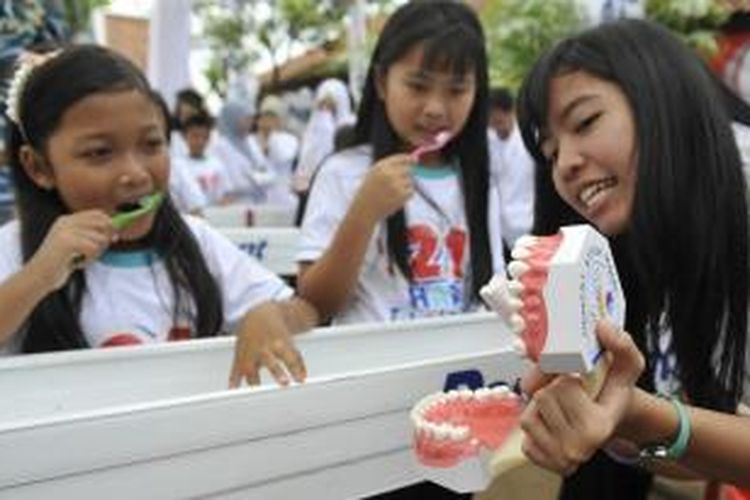The behavior of maintaining oral hygiene in children in Indonesia is still low. It can be seen from the results of Basic Health Research conducted in 2013, where there were 28.9% of children aged 5-9 years experiencing dental health problems. This high number of dental problems is influenced by behavior, knowledge, and habits in maintaining oral health. Moreover, at childhood, health education is not easy to be understood. One way to increase knowledge and awareness about the importance of maintaining oral health is through Dental Health Education (DHE) or oral health counseling. DHE aims to improve knowledge, and change one’s behavior, both individually and in groups, which leads to a healthy lifestyle. At childhood, a lot of information received comes from interactions with people around them. For example parents, teachers, and peers. Children spend more time playing and learning new things with friends, and because of that intense exchange, information can be absorbed well.
Dr. Ninuk Hariyani, drg., M. Kes., MPH., PhD from the Department of Public Dental Health, Faculty of Dental Medicine UNAIR, in the team conducted a study on the effectiveness of a peer-group method to provide dental and oral health education for children . As the name suggests, this method applies the pattern of delivery of information from children who are considered to have influence, such as class leaders, group leaders, to other children. This health information exchange is designed as naturally as possible, and it is hoped that the exchange of information that usually occurs when children play and study can provide some dental health education.
This research was conducted on 77 students in grades 4-5 Elementary School for two months. Several groups were formed consisting of 5-10 children per group. This group is formed naturally, they tend to group with friends with same hobbies, likes at the same thing, and personal closeness. From each group, someone with an influence, for example, good at talking, most active, and can lead his friends was chosen by each group. At the beginning of the study, all children conducted a pre-test to measure their knowledge of oral health.
With the help of teachers in schools, researchers began counseling on oral health to all students in grades 4-5. Then, the group leaders were given a “mission” to deliver oral health education to their friends, at least twice a day for two months. This “mission” is very important to determine the effectiveness of the peer-group method for the delivery of dental and oral health material or DHE.
After two months of research, all students as respondents went through a post-test to measure the improvement in dental and oral health knowledge after getting information from their peers. The results show that there is an increase in post-test results in 4th grade students, but there is a decrease in post-test results in 5th grade students. In the statistical analysis also there was no significant difference between the pre-test and post-test results. As for group leaders, there was an increase in the post-test results for all group leaders.
The results of this study can be influenced by several factors. One of them was the interaction between the group leader and his friends who turned out not intense. The topic of dental and oral health is also rarely raised in their daily lives at school, even by their group leaders. They are more often involved in exchanging information about things they like, for example toys and films. Group leaders have improved post-test results. It can be caused by the responsibilities imposed on them as group leaders, so naturally they are more in charge of dental and oral health material. In this case, it can be concluded that the peer-group method is not suitable to be applied as an oral and dental health education method.
Author: Dr. Ninuk Hariyani, drg., M. Kes., MPH., Ph.D
Hariyani N, Setyowati D, Aristyanti N, Setijanto D. Natural peer group approach as a learning strategy for maximizing dental health education in school-age children. J Int Oral Health 2020; 12: 27-32.
Related link can be accessed at: Journal of International Oral Health (JIOH) http://jioh.org





